Vaccination against coccidiosis of commercial pullets within the U.K. has increased at a faster rate than in many other countries due to the rapid growth of the UK’s free-range egg production sector during the past 15 to 20 years. During this period of time, the free-range (including organic) share of the UK’s total egg production has doubled.
Currently, the split by type of production system of commercial egg layers in the UK is approximately 25.5M free range, 10M enriched cage, 1.5M organic (free range) and 1M barn (Department for Environment Food & Rural Affairs, U.K. Government).
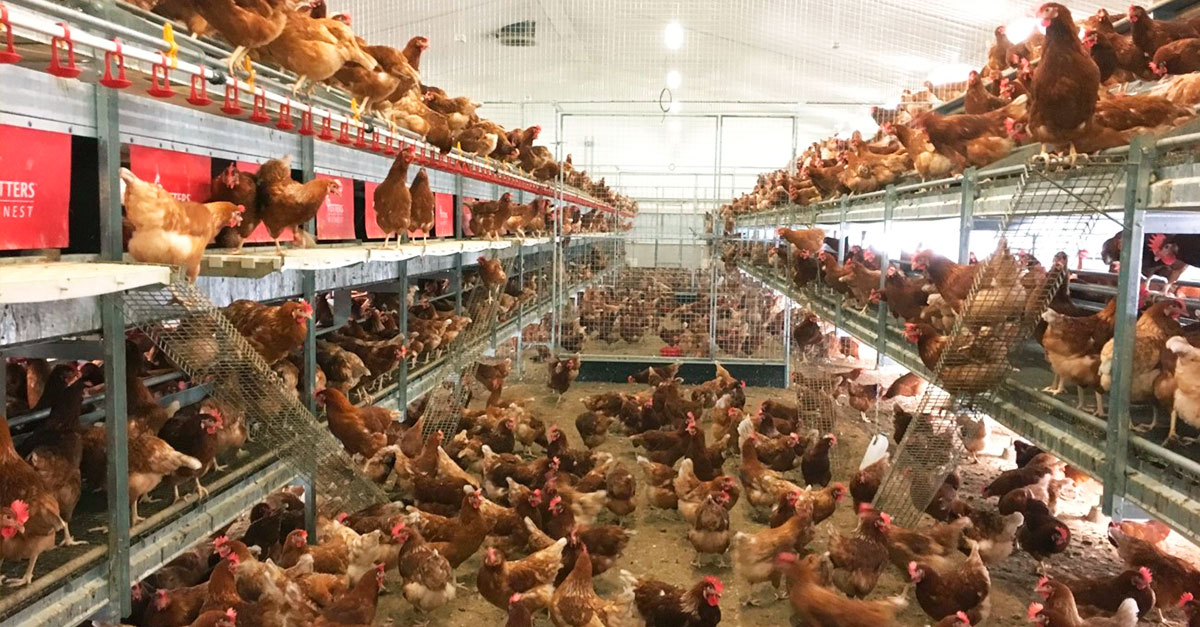 Modern laying aviary system.
Modern laying aviary system.
The growing demand for point-of-lay pullets which are ‘trained’ to negotiate ‘cage-free’ production systems, has driven a rise in the numbers of pullets reared on traditional floor rearing systems and, more recently, on aviary rearing systems.
This shift away from rearing and laying systems within which birds have no contact with their faeces, has resulted in a rise in the number of rearing and laying farms that are at risk of coccidiosis outbreaks.
This has therefore led to an increase in the use of coccidiosis vaccines as preventive treatment to protect this larger population of chickens.
The vast majority of commercial pullet rearers in the U.K. manage their pullets according to the guidelines stipulated in the British Lion Code of Practice which was introduced in 1998 in order to control the incidence of Salmonella spp. in U.K. poultry and eggs.
These guidelines also dictate that in order to avoid the risk of coccidiostat residues being detected in eggs, in-feed anticoccidials cannot be included in feed provided to pullets beyond 12 weeks of age and lasalocid is prohibited altogether.
Adhering to these requirements has made vaccination the main method of control of coccidiosis in the UK.
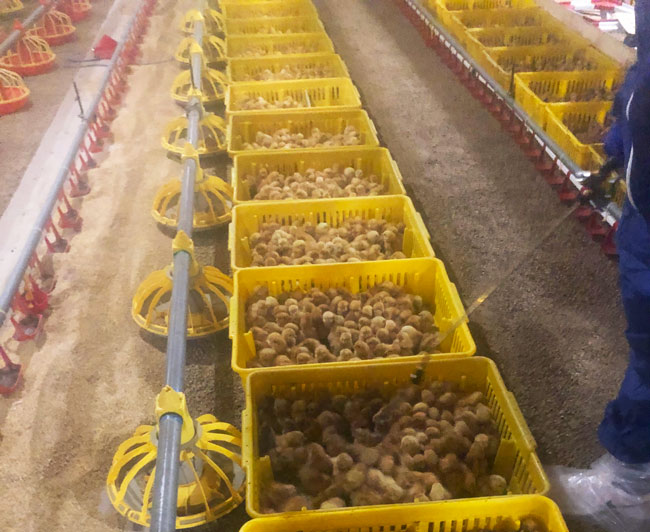 On-farm administration of Evalon®.
On-farm administration of Evalon®.
The local HIPRA team can provide support to get optimal vaccination against coccidiosis
Coccidiosis treatment through vaccination via coarse spray of chicks ‘in-hatchery’ and ‘on-farm’ are equally popular and efficacious (July, 2016); discussions between the pullet rearing organisation and their veterinarians will determine which method is adopted.
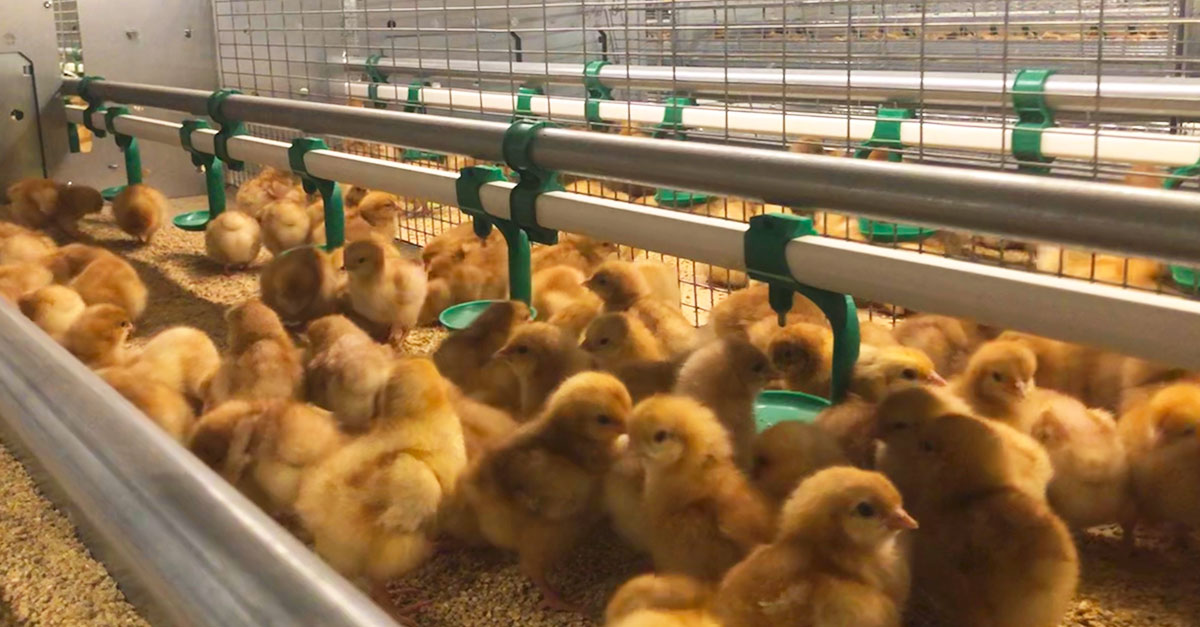 Day-old chicks housed in an aviary system.
Day-old chicks housed in an aviary system.
When requested, in this case HIPRA’s U.K. & Ireland Poultry Team, can provide practical and theoretical support to hatcheries and farms in order to ensure that administration of the vaccine is efficient and that the environment within rearing houses facilitates successful sporulation and cycling of coccidial oocysts (August, 2020).
‘Half-house brooding’ and ‘double brooding’ (birds destined for two houses initially reared together) are commonly practised during the first 2-6 weeks of rear in the U.K.
If considered potentially beneficial, HIPRA staff can arrange for oocyst counts and speciation to be carried out on faeces samples collected during the early stages of the rearing period.
Veterinarians involved with some pullet rearing operations carry out on-farm health checks of coccidiosis vaccinated flocks when the pullets reach four weeks of age.
These checks involve post-mortem inspection of the intestinal tracts of a small number of randomly selected pullets.
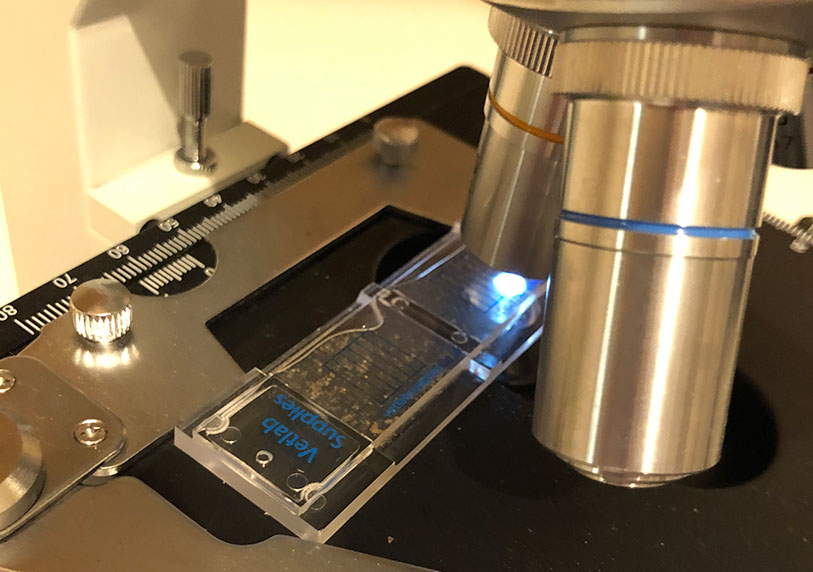 Oocyst counting.
Oocyst counting.
Rearing for free-range birds and how different rearing methods affect vaccination
Initially U.K. free-range laying farms were of the “flat deck” type. This meant birds only had to go up a rise of less than a metre to go from the floor to reach the feeders, drinkers and the nest boxes.
Pullets reared on floors in broiler type houses found this system very easy to deal with when they moved onto the laying farm. From the point of view of vaccination and getting good vaccine cycling these broiler type rearing sites were easy to vaccinate.
HIPRA staff always advise pullet rearers to restrict the area the chickens have access to for the first two weeks of life to get a very good first cycle of the vaccine. Some rearers will keep them in a smaller area for longer to save on heating costs. Halving the house by putting a barrier in the middle such as plastic sheeting is very easy.
Other methods often used include using cardboard or wire approximately 50cm high to make a channel in the middle of the shed. The birds then occupy this middle area in the centre which is easier to heat as the area being used is away from the sides.
The birds are also easy to feed as the control pans are still accessed by the birds for sheds that have control pans. Chain feeders are easier to accommodate but any gaps need to be blocked off so chicks do not escape into the rest of the house.
 Flat deck free range layer house. The doors (currently closed) to the outside ranging area are on the right. There is then an area of floor with wood shavings on it. On the left of the picture the birds come up one metre on to the “deck” where they can be seen on perches and feeding.
Flat deck free range layer house. The doors (currently closed) to the outside ranging area are on the right. There is then an area of floor with wood shavings on it. On the left of the picture the birds come up one metre on to the “deck” where they can be seen on perches and feeding.
In the last 5 years multitier laying houses have become the normal for new houses being built. These require the birds to go up to 4 metres from the ground to reach next boxes and right at the top normally they have many perches where the birds really like to spend the night.
These multitier systems allow more birds to live in the house and are therefore very attractive to farmers (June, 2020).
Pullet rearers soon found that birds reared in a broiler type environment were not good at going all the way up into the system when going on to the laying farm. So the rearers started to put extra floors in their rearing houses with feed and water available at higher levels to encourage the birds to go up and get them used to climbing up and down.
This now means that most rearing sheds have much more “furniture” in them which can be a challenge when trying to find space to lay out chick boxes for vaccination.
It is also more difficult on these sites to restrict the space the birds use for the first two weeks, as this extra equipment gets in the way of where fences need to be run to keep the birds in.
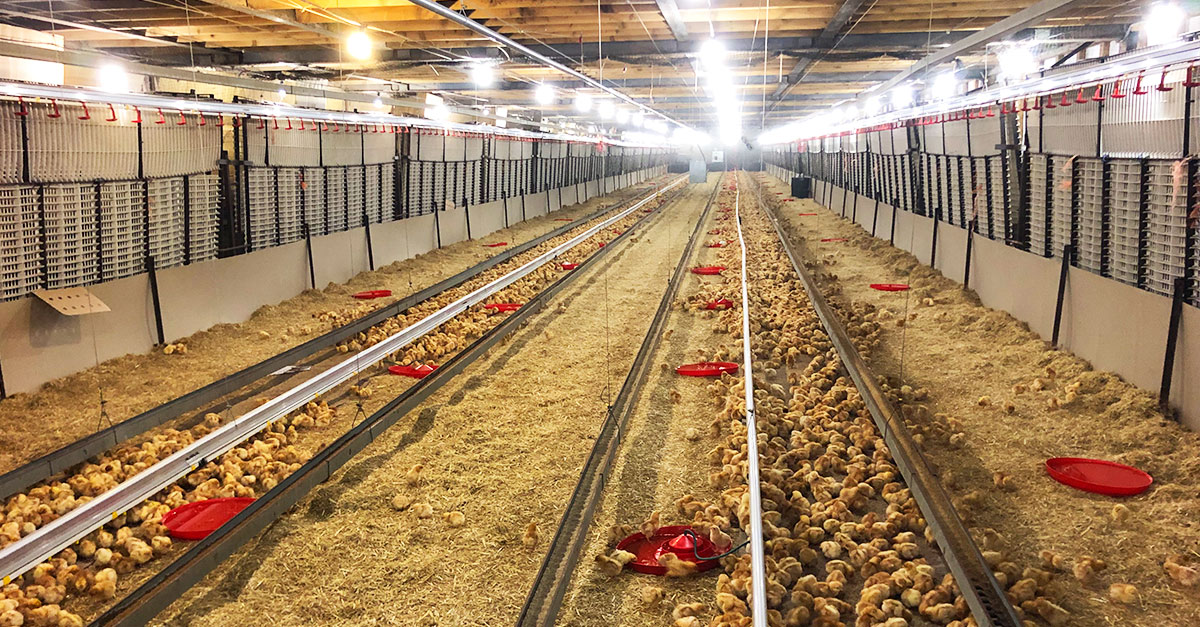 Restrictive brooding in a house with raised slatted areas. The slatted floors are folded away for the first few weeks of life. This makes a logical area to place a cardboard fence to keep the chicks in a much smaller area. In this shed the birds have been concentrated in a channel down the middle of the shed. This is the most popular way to brood when restricting birds. After two weeks, the cardboard is removed and the slats can start to be folded down. The drinker line for the slatted area can be seen raised near the lights.
Restrictive brooding in a house with raised slatted areas. The slatted floors are folded away for the first few weeks of life. This makes a logical area to place a cardboard fence to keep the chicks in a much smaller area. In this shed the birds have been concentrated in a channel down the middle of the shed. This is the most popular way to brood when restricting birds. After two weeks, the cardboard is removed and the slats can start to be folded down. The drinker line for the slatted area can be seen raised near the lights.
HIPRA staff, in this case from the U.K. and Ireland, often go to new or existing farms before chicks are due to be placed to work with the farm manager to get the easiest layout of boxes and brooding space.
This close working relationship with the farmer is one of the main benefits of working with HIPRA vaccines.



